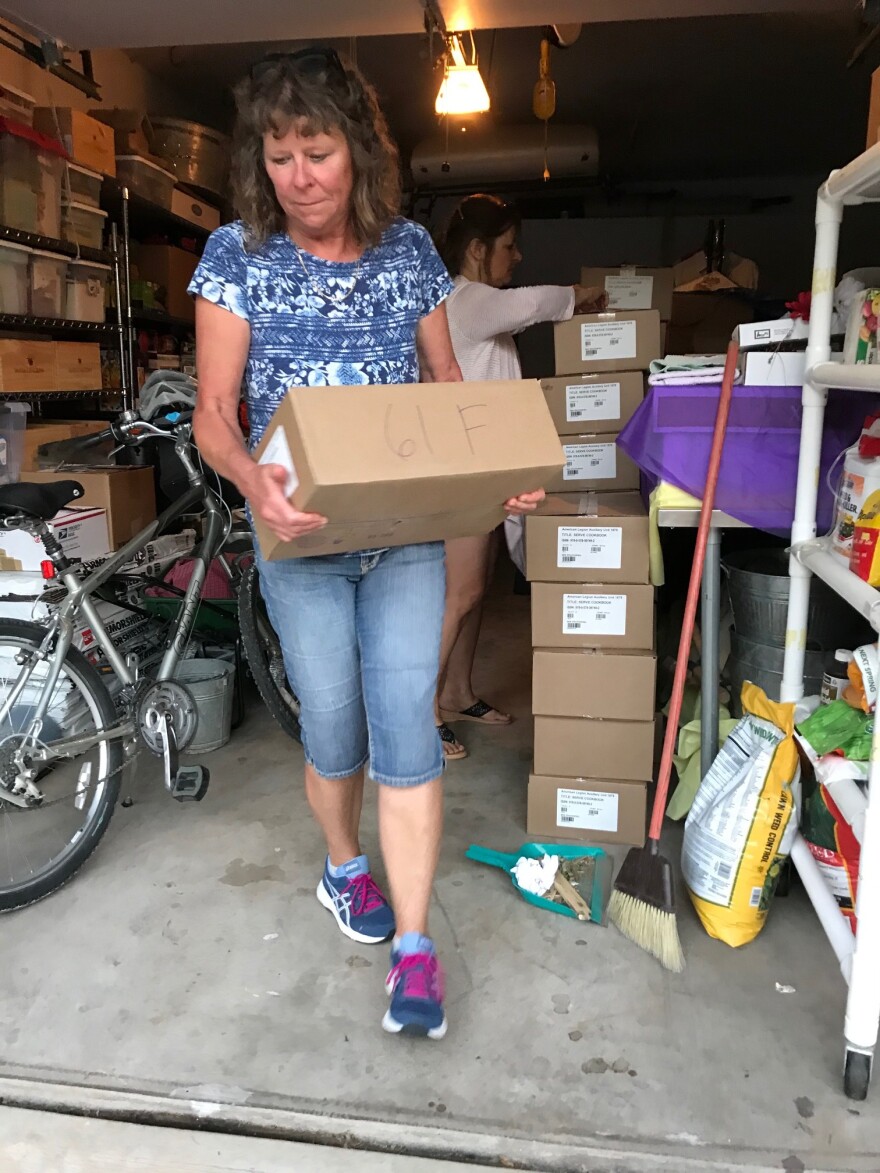On a warm Fort Collins evening, Ann Diaz hands out cardboard boxes to the ladies of The American Legion Auxiliary Unit 1879.
The boxes are filled with copies of the local TALA unit's two-year-long labor of love to write and publish the cookbook, "SerVe: Revisiting A Century of American Legion Auxiliary Cookbooks."
As the title suggests, it's an anthology of 100 years worth of recipes from around the country. But it's not just about food.
"Part of our mission is to bridge the civilian-military gap," said Diaz, who helped coordinate the project. "Not a lot of people today have personal connections with people in the military. But everybody eats."
The chapters are separated out by wartime eras, reflected in the recipe names. A post-WWI "Flapper Pie." "Defense Apples" from the 1940s. A 1980s desert titled "The Next Best Thing to Robert Redford." And no matter what the era, lots of Jell-O.
"You can't have a cookbook celebrating 100 years and ignore gelatin, as much as some people really wanted to ignore gelatin," Diaz joked.

The book also tells the unique histories of those eras — whether it was saving up sugar rations for a rare batch of fudge, or mixing batter for donuts in a soldier's helmet and rolling out the dough with a shell casing.
But putting the book together was no easy task. As they went through hundreds of vintage recipes, they had to decipher things like how much "five cents worth of ground lamb" would have been in the 1930s, or what exactly "oleo" was. (It's margarine.)
Sharon McFall, who helped select the recipes, says some ingredients weren't even available any more.

"It was funny because some of the recipes, it wouldn't tell you the quantity that you need — you know like a cup of this or a tablespoon of that — some of them didn't even tell you that you had to bake the item," McFall said. Like the pineapple upside down cake recipe from 1919. "But obviously it's a cake, you have to bake it so you just had to try to figure that out."
Karen Boehler, who did the historical research for the project, says they also updated some of the recipes to make them more convenient for cooks today.
Another 1919 dish called for a very hands-on approach.
"A recipe for chicken tamales talked about going out into the yard and butchering a fat hen," she said. "We went to Safeway."
They spent about six months just gathering the books, Boheler said, looking on eBay, borrowing copies from other ALA chapters. Researching the histories of each era proved difficult as well.
"So many of the documents and the reports were different," she said. "They would talk about different dates of battles, different amounts of how much it cost, how many fatalities. And so I say at the beginning of the book, this is an introduction and hopefully it's just enough of a summary to research and read more on your own time."
There are some meals that defy eras, like the military staple of hamburger gravy on toast. The book uses the official United States Marine Corps Food Service recipe circa 1952 for what is widely known as "S**t on a Shingle."
The recipes also feature food stories from veterans, like the peach cobbler from a 1974 ALA cookbook from Georgia, said contributor Kim Miller, who shared the story of the Vietnam veteran whose life was saved by peaches.
"He had saved a can of peaches out of his rations and he was going to have it at the end of the day after a long day of fighting," Miller said. "When he jumped out of the helicopter, what he didn't know was everybody was in the midst of an ambush."
The soldier was shot in the shoulder, but the bullet hadn't penetrated very deeply. So it was easily removed at the scene.
"That night when he went to enjoy his can of peaches he realized that his backpack was completely soaked with peaches," she said.
The inclusion of the stories is a tribute to those who served in the armed forces, as well as the former and current TALA members. But it's also a fundraiser for veterans' mental wellness programs, including a writing project at Colorado State University. Proceeds will go to put out a journal of veterans' writings called "Charley Mike" later this summer. The auxiliary is also sponsoring the National Veterans Creative Arts Festival this fall.
"We wanted to support veterans' mental wellness because that's important, but in sharing their stories we also grow and benefit by understanding the military better, and having a broader perspective about who it is that serves," Diaz said. "So when we think about our obligations as civilians, we have a deeper understanding of what that means."

The cookbook also aims to bridge the generational gap, particularly among younger people. Twenty-year-old Megan Valliere got a big lesson from the older ALA members when it came time to test the recipe for Dorothy's Exquisite Ice Cream, and was faced for the first time with an ice cream machine and told to "get cranking,"
"I was like, I literally don't know what that is," said Valliere, who joined the group last year.
A section of the book covers the importance of comfort food in the military. In 1945, the U.S. Navy spent $1 million to convert a concrete barge into a floating ice cream factory and the army constructed mini ice cream stations on the front lines to deliver individual cartons to soldiers in foxholes.
In 1932, the Hershey company was tapped by the U.S. Army to create a field ration chocolate bar for soldiers that didn't melt and tasted "only slightly better than potatoes," Diaz said. "So that the troops wouldn't want too much of it."
Maybe it's a good thing that recipe didn't make the cut.
"SerVe: Revisiting a Century of American Legion Auxiliary Cookbooks" is available for sale now.









